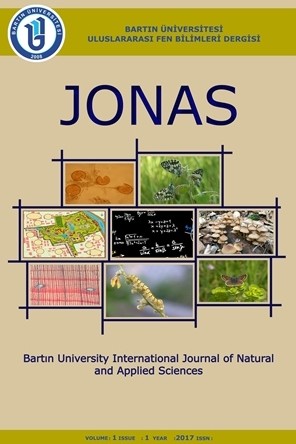AN OPTIMIZED COMET ASSAY PROTOCOL FOR DROSOPHILA MELANOGASTER
AN OPTIMIZED COMET ASSAY PROTOCOL FOR DROSOPHILA MELANOGASTER
Drosophila Melanogaster, Genotoxicity Comet assay,
___
- 1. Adams M.D., Celniker S.E., Holt R.A., Evans C.A. & Gocayne J.D. (2000). The Genome Sequence of Drosophila melanogaster. Science, New Series, Vol. 287, No.5461:2185-2195.
- 2. Augustyniak M. Gladysz M. Dziewie M. 2015. The Comet assay in insects—Status, prospects and benefits for science. Mutat. Res.: Rev. Mutat. Res. http://dx.doi.org/10.1016/j.mrrev. 2015.09.001.
- 3. Carmona E.R., Guecheva T.N., Creus A. & Marco R. (2011). Proposal of an In Vivo Comet Assay Using Haemocytes of Drosophila melanogaster. Environmental and Molecular Mutagenesis. 52:165-169.
- 4. Collins A.R. (2004). The Comet Assay for DNA Damage and Repair; Principles, Applications, and Limitations. Molecular Biotechnology. 26: 249-261.
- 5. Dhawan A., Bajpayee M., Pandey A.K. & Parmar D. (2009). Protocol for the single cell gel electrophoresis/comet assay for rapid genotoxicity assessment. Developmental Toxicology Division Industrial Toxicology Research Centre Marg, Lucknow 226001U.P. India, Retrieved September 21, 2013 from http// www.cometassayindia.org / Protocol %20for %20 Comet %20Assay.PDF.
- 6. Fairbairn D.W., Olive P.L. & O'Neill K.L. (1995). The comet assay: a comprehensive review. Mutation Research. 339:37-59.
- 7. Gaivão I. & Sierra L.M. (2014). Drosophila comet assay: insights, uses, and future perspectives. Frontiers in Genetics. August 2014 | Volume5 | Article 304:1-8.
- 8. Gupta S.C., Mishra M., Sharma A., Balaji T.G.R.D., Kumar R., Mishra RK. & Chowdhuri D.K. (2010). Chlorpyrifos induces apoptosis and DNA damage in Drosophila through generation of reactive oxygen species. Ecotoxicology and Environmental Safety. 73:1415–1423.
- 9. Langie S.A.S., Azqueta A. & Collins A.R. (2015). The comet assay: past, present, and future. Frontiers in Genetics|www.frontiersin.org 1 August 2015|Volume6|Article266:1-3.
- 10. Olive P.L. & Banáth J.P. (2006). The comet assay: a method to measure DNA damage in individual cells. Nature Protocols | VOL.1 NO.1: 23-29.
- 11. Ong C., Yung L.Y.L., Cai Y., Bay B.H. & Baeg G.H. (2014). Drosophila melanogaster as a model organism to study nanotoxicity. Nanotoxicology. ISSN: 1743-5390 (print), 1743-5404 (electronic) Nanotoxicology, Early Online: 1–8. DOI: 10.3109/17435390.2014.940405.
- 12. Piper M.D.W. & Partridge L. (2018). Drosophila as a model for ageing. BBA - Molecular Basis of Disease. 1864:2707–2717.
- 13. Sezginer H. &Dane F. (2016). Genotoxic Analysis Methods of Toxic Substances. Turkish Journal of Scientific Compilations. 9 (1): 50-55.
- 14. Sayed A.E.D.H., Watanabe-Asaka T., Oda S., Kashiwada S.& Mitani H. (2018). γ-H2AX foci as indication for the DNA damage in erythrocytes of medaka (Oryzias latipes) intoxicated with 4-nonylphenol. Environmental Science and Pollution Research. https://doi.org/10.1007/s11356-018-2985-z.
- 15. Tice R.R., Agurell E., Anderson D., Burlinson B., Hartmann A., Kobayashi H., Miyamae Y., Rojas E., Ryu J-C. & Sasaki Y.F. (2000). Single Cell Gel/Comet Assay: Guidelines for in vitro and in vivo Genetic Toxicology Testing. Environmental and Molecular Mutagenesis. 35:206-221.
- 16. Tiwari A.K., Pragya P., Ram K.R. & Chowdhuri D.K. (2011). Environmental chemical mediated male reproductive toxicity: Drosophila melanogaster as an alternate animal model. Theriogenology 76:197–216.
- Yayın Aralığı: Yılda 2 Sayı
- Başlangıç: 2017
- Yayıncı: Bartın Üniversitesi
AKSEKİ SARIHACILAR KÖYÜ CAMİ AHŞAP TEŞHİSİ
Barbaros YAMAN, Ali Akın AKYOL, Kısmet AKTAŞ
ENERGY AND EXERGY ANALYSIS OF A NOVEL THREE-STAGE HEAT PUMP DRYING SYSTEM
FIRAT HAVZASINDA BULUNAN BAZI İLLERİN SICAKLIK VE NEM MODELLERİ
HYDROGEN AS AN ENERGY CARRIER AND HYDROGEN PRODUCTION METHODS
Halil MUTLUBAŞ, Zafer Ömer ÖZDEMİR
CHANGES OF PHENOLIC COMPOUNDS IN TOMATO ASSOCIATED WITH THE HEAVY METAL STRESS
Dursun KISA, Ömer KAYIR, Necdettin SAĞLAM, Sezer ŞAHİN, Lokman ÖZTÜRK, Mahfuz ELMASTAŞ
THE FACTORS THAT THREATEN THE MIGRATORY BIRDS
PROFIT ENHANCEMENT OF MEAT PRODUCTS MARKETING : THE CASE OF FAST FOOD AGRIBUSINESS IN NIGERIA
Felix ACHOJA, Daniel Chukwujioke OKEKE, İfeyinwa Alexandra EGBUIWE
AN OPTIMIZED COMET ASSAY PROTOCOL FOR DROSOPHILA MELANOGASTER
Melih ÖZTÜRK, Ali ÖZTÜRK, Muhammet SAVAHİL
SOME PHYSICAL PROPERTIES OF THE BUILDING STONES FROM SOUTHEASTERN ANATOLIA REGION
